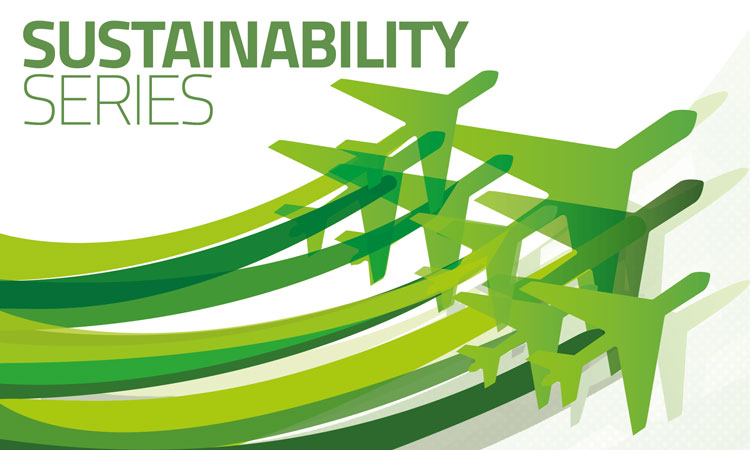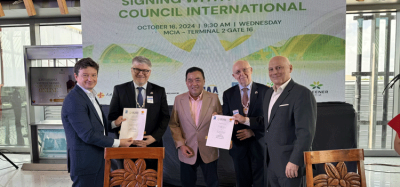Sustainability Series: Is KLM advising customers not to fly?
- Like
- Digg
- Del
- Tumblr
- VKontakte
- Buffer
- Love This
- Odnoklassniki
- Meneame
- Blogger
- Amazon
- Yahoo Mail
- Gmail
- AOL
- Newsvine
- HackerNews
- Evernote
- MySpace
- Mail.ru
- Viadeo
- Line
- Comments
- Yummly
- SMS
- Viber
- Telegram
- Subscribe
- Skype
- Facebook Messenger
- Kakao
- LiveJournal
- Yammer
- Edgar
- Fintel
- Mix
- Instapaper
- Copy Link
Posted: 12 July 2019 | International Airport Review | No comments yet
In an era of environmental unrest, KLM have taken it upon themselves to advise customers to consider their options before booking a flight in a bid to reduce the impact aviation has upon the environment.


Fly Responsibly is KLM’s commitment to taking responsibility for its own role in creating a more sustainable future for aviation. It includes all of the work we already do, and will do in the future, to improve the sustainability of our operations. But it also includes sharing what we do well with others, while learning from what they do well. Only when we work together across the entire industry can we make real progress. So, with Fly Responsibly, we invite consumers to carefully consider their options before booking a flight. We invite companies to offset corporate travel through a corporate biofuel programme, and open source our best practices for other airlines to use.
The aviation industry is responsible for two to three per cent of man-made CO2 emissions worldwide. This figure is growing, mainly due to the growth in our world population, because more people want to explore the world and can afford to fly. Like any industry, aviation needs to do all within its power to minimise the impact it has on the environment and maximise the positive impact it has on society.
In our centennial year, KLM not only looks back in celebration, but looks forward to a more sustainable future. When we started 100 years ago, our primary concern was safety. Over the years, the aviation industry has worked together to implement safety standards and improve overall safety. Now, we acknowledge we have another big responsibility: To leave a world for our children to explore. To that end, we propose that as an industry, we come together like we did on safety, and overcome this challenge as well.
For many years, we have been doing as much as we can. KLM is committed to driving a sustainable future for aviation. We have a proven track record (Air France – KLM has been in the top two rankings for 14 years in a row of the Dow Jones Sustainability Index) and are continuously investing and innovating to make our products and processes more sustainable.
Much more is needed, however. KLM takes this responsibility seriously and has a long history of taking steps in the area of sustainability: Starting with the opening of KLM’s Environmental Centre in 1990, and now working on a “2030 and beyond” sustainability strategy. One of the most crucial aspects of the sustainability strategy is to reduce our environmental footprint. However, for KLM, sustainability also means caring for the wellbeing of our workforce and making sustainable choices in products that are being purchased.
How KLM works on reducing its carbon footprint
Transition to sustainable fuel
The transition from fossil fuels to renewables is a necessary step to reduce the carbon footprint of aviation. The use of sustainable biojet fuel compared to conventional fuel can reduce CO2 emissions by up to 80 per cent. After a demonstration flight in 2009, KLM was the first airline in the world, in 2011, to use sustainable biojet fuel in part for one of its commercial routes. Currently, KLM is the only European airline to partly use sustainable fuel for intercontinental flights.
Over the last three years (up to the end of 2019), all flights from Los Angeles to Amsterdam have used biojet fuel in part. Another important step towards the development of biojet fuel was the establishment of the KLM Corporate BioFuel Programme in 2012, a collaboration between KLM and various multinationals. The participants in the programme pay a surcharge that covers the price difference between sustainable biojet fuel and traditional kerosene. To increase the production of sustainable fuel, KLM recently announced its purchasing commitment to the first European plant for sustainable aviation fuel. From 2022 onwards, it will produce around 100,000 tonnes of sustainable fuel.
Less weight means lower fuel consumption
In 2013, Air France-KLM Martinair Cargo was the first to introduce over 22,000 new, lightweight cargo nets. Incorporating a newly developed material, the cargo nets are 50 per cent (nine kilograms) lighter than their predecessors, making them easier to use. They also have two other important benefits: The nets now have a lifespan of five years, instead of three, and the reduction in weight means lower fuel consumption and CO2 emissions. Another important measure was the introduction of lightweight trolleys in 2015. The new full-size and half-size trolleys are eight kilograms and five kilograms lighter, reducing our flight weight by about 400kg. Of the many ways we have found to reduce weight, one of the most surprising, has been to use less paint per plane. This reduces the total weight by 15 per cent.
Water power
One of the ways in which KLM tries to reduce its water use is by applying the so-called ‘semi-dry wash’ method. Instead of an average 12,000 litres of water needed to clean a Boeing 777, now only 150 litres are needed, amounting to 80 times less water. In total, eight million litres of water were saved this way in 2017 alone. Keeping the engines of our aircraft clean is also important, for safety reasons and because clean engines use less fuel and thus emit less CO2. In 2012, KLM developed advanced engine-washing equipment, enabling water to be sprayed into the front of the engine several times. With the engine rotating, the water is able to reach the fan and compressor, just like in a washing machine. The result, a clean engine, better performance and significant reductions in CO2 emissions. The waste water – more than 100 litres – is caught and fed off responsibly through the KLM Environmental Centre. Another bonus: The Engine Water Wash programme can be carried out at the same time as a regular aircraft check, without any additional ground time.
Going electric
KLM works towards replacing all its ground handling equipment for alternative electric ones. Currently, almost half of all the equipment is electric. KLM is the first airline in the world to start replacing all its existing lower-deck loaders with electric ones. This process will occur in phases. These loaders are the final link in bringing baggage containers and freight on board, relying on a scissor mechanism to lift pallets up to the door of the aircraft and then roll the cargo in.
Ambitions
Towards 2030, KLM’s ambition is to reduce its total CO2 emissions by 15 per cent compared to 2005. This is another step towards the common goal of IATA to reduce CO2 emissions by 50 per cent in 2050 (compared to 2005).


















